Problem Statment
Designing experience for the users who have limited or no knowledge about the game & players to succeed on a virtual match fix game of cricket. Help user to select players seamlessly,without looking other websites or app, where everyone knows player and match details.
“We believe that people who do end up playing put in a lot of time researching other sites and this is something that we can help the players circumvent by allowing them access to that information.” - Product designers of Gamezy
Solution
The solution involved
- Allowing access to information in such a way that it makes the process of research easier for a regular user?
- How might we make the learning curve of the new user gentler?

What is the information that is available to the user on fantasy apps?
From looking into current platforms (both web and mobile) and also going through the articles and blog, we realized that the infomation displayed on the platforms and the infomration needed has a gap.The users needed a plethora of information (such as pitch conditions, player performance) and most of the current platforms provided with just the value of the players. Hence the idea was to bridge the gap by providing the information needed in a structured and scalable manner.
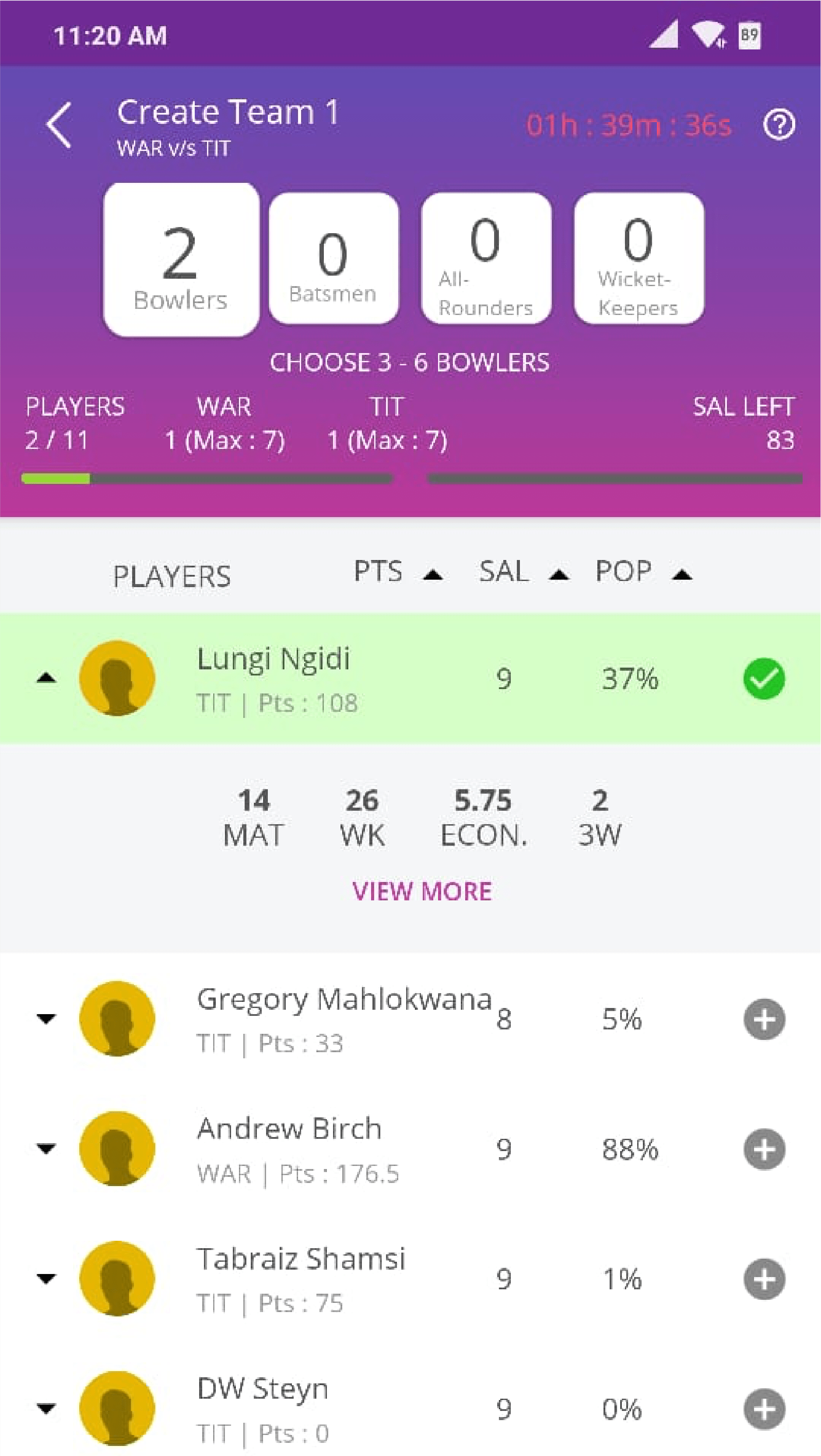
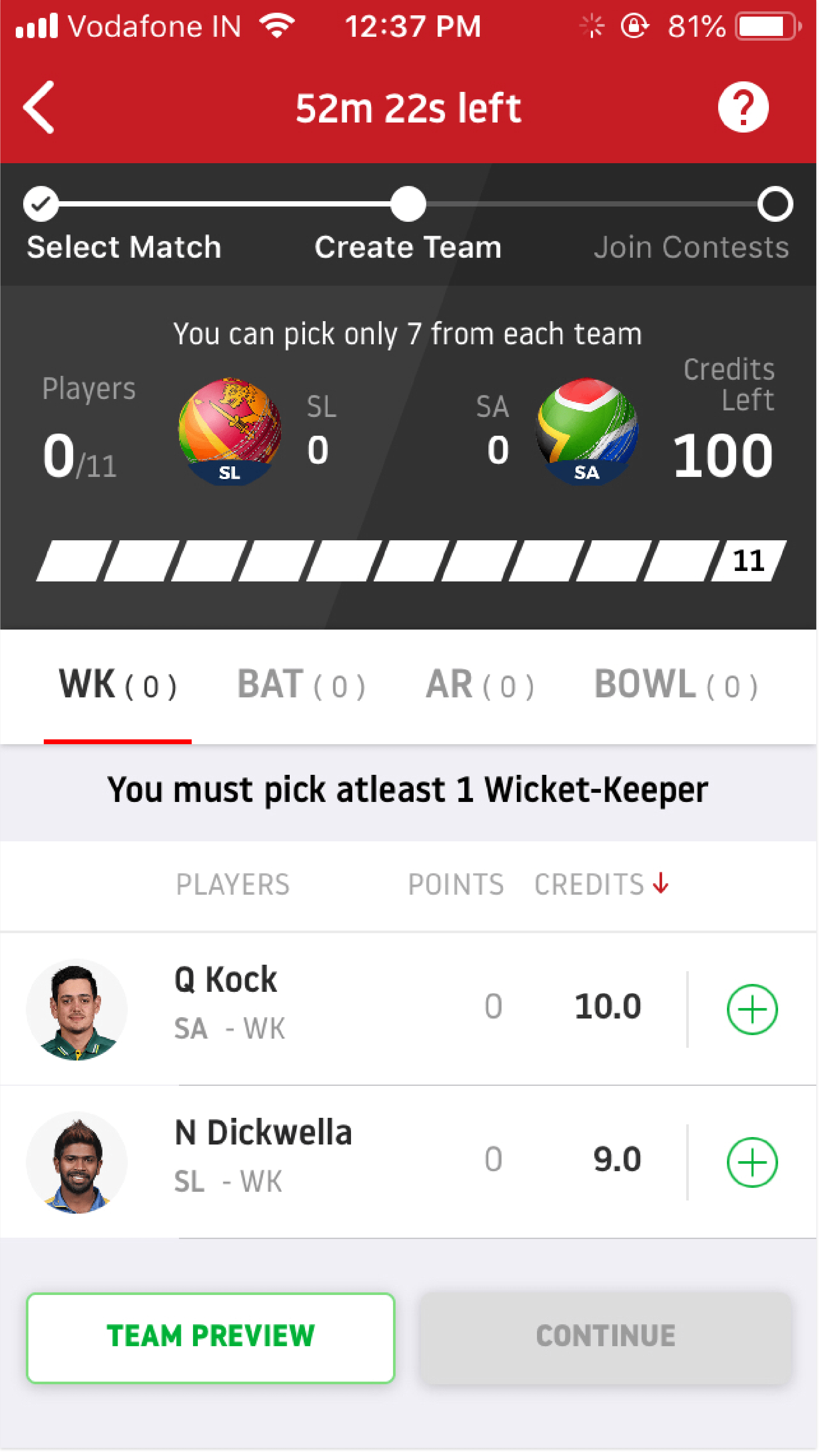
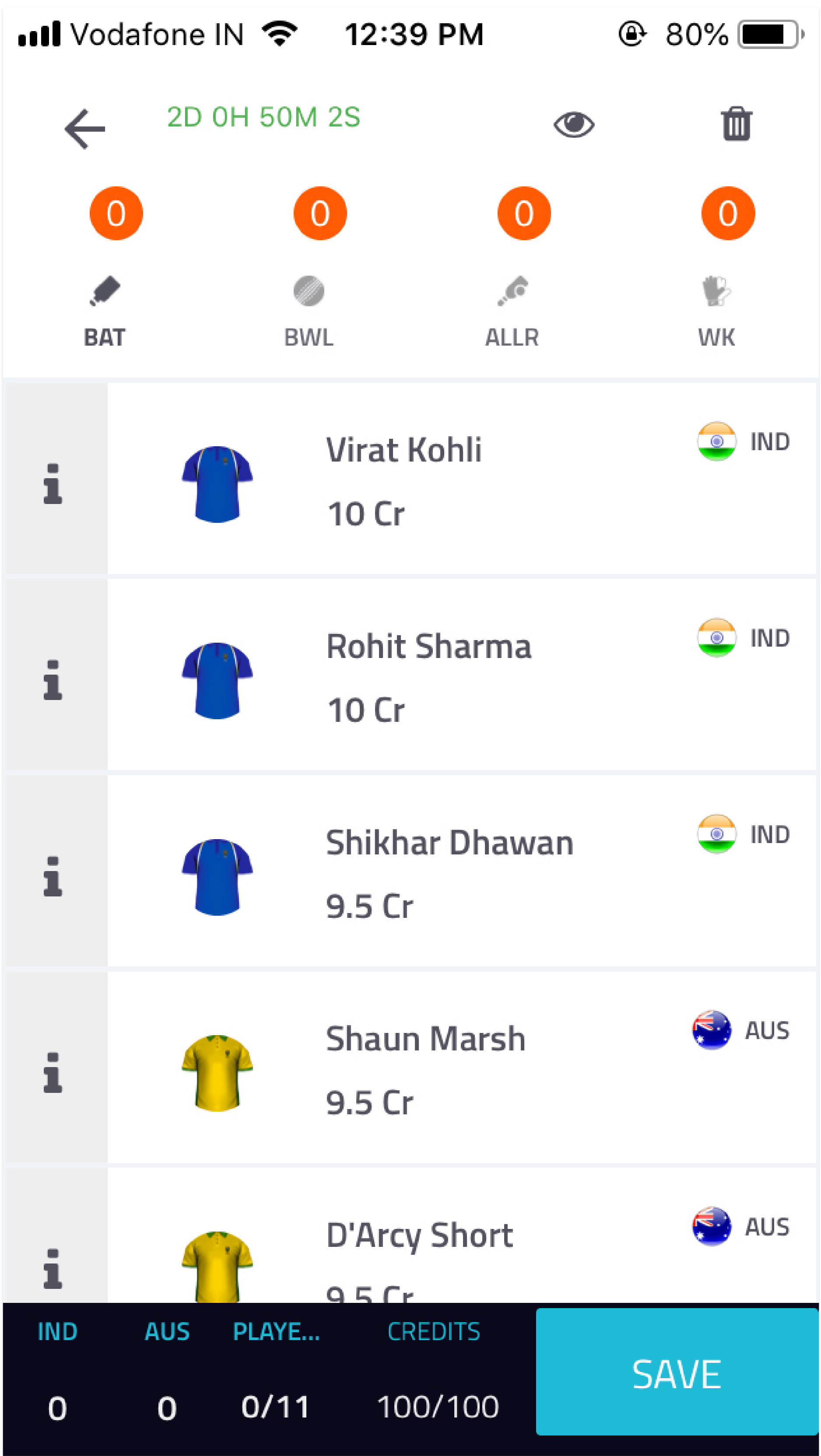
#1 Pain point
A regular user spends a lot of time in doing the research in order to form the team.
Opportunity
How might we allow access to information in such a way that it makes the process of research becomes easier for a regular user?

Key Performance indices
For the sake of nomenclature, let all the factors necessary to analyse and pick up a player be called ‘Key performance Indices’
Primary KPIs
The basic factors a user usually looks at to select a player. These parameters are common across the users irrespective of their expertise in the game.
Secondary KPIs
These factors are considered by the pro-fantasy participants while choosing players for the team. These are non-exhaustive. The more proficient the user is, the more he would consider these factors.
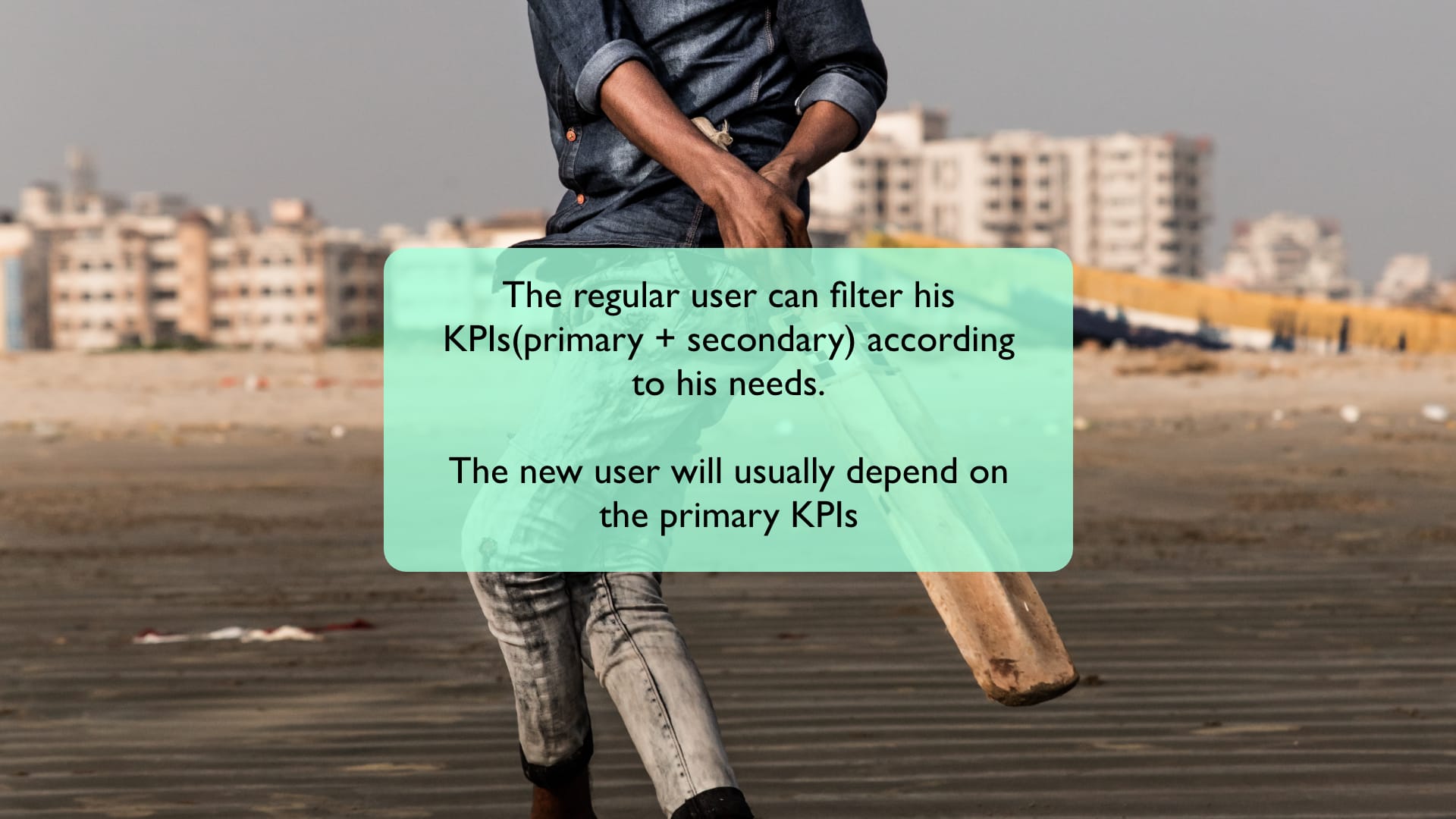
All the information needed by the user could be alligned to these factors as shown below
| Batsman | All rounder | Bowler | Wicket keeper | Role independent | |
|---|---|---|---|---|---|
| Primary KPIs | Strike rate, Average, Matches played, Overs, | Wickets, Overs, Economy, | Runs, Wickets, Catches, Man of the match, | Catches, Run Out, Stumping | |
| Secondary KPIs | 6s/4s, Highest score, Hat Trick, Ducks, Total runs, 100s/50s, Usual batting position, Not out | Maidens, Runs, Dot balls, Fastest balling speed, Hat Trick | MTeam won between 2 | Pitch conditions, Pitch conditions vs Boundary circumference, Day/night match, Ground condition |
| Across Roles | Player performance vs Weather conditions, Performance of opposite team, Current line-up positions, Injuries, Player performance trend, Home wins |
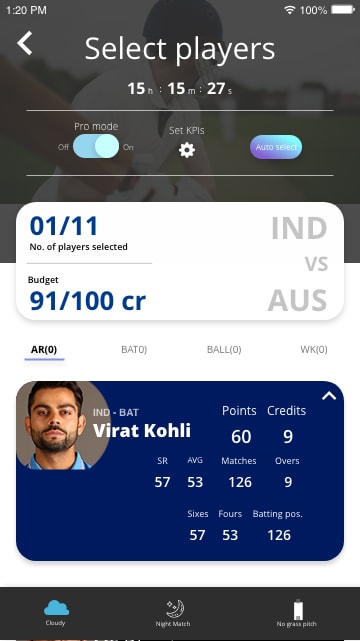
User can toggle between pro-mode and normal mode. On toggling to the pro mode, the user gets to see Secondary KPIs.
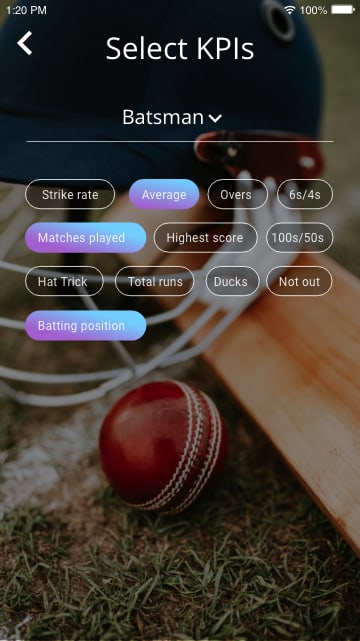
The disply of KPIs can be customized by the user
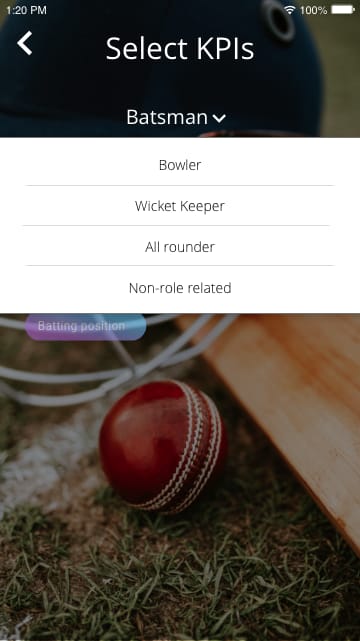
The KPIs are divided into 5 categories (4 of them being role based)
#2 Pain point
A new user drops off since he doesn’t know what is the right information that he should keep in mind while forming a team.
Opportunity
How might we support a new user to make the learning curve of the new user gentler?
Auto-complete
Adopt this feature in order to educate the new user. The user could autocomplete the team building process and see the factors (KPIs) that were involved in picking up that particular player. The player would only be allowed to participate in the free matches.
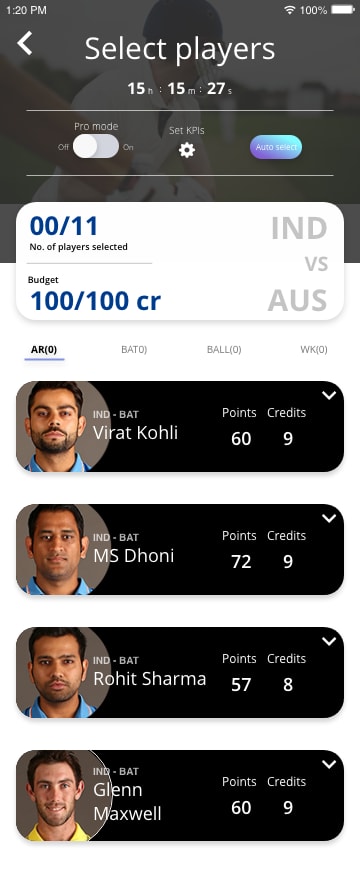
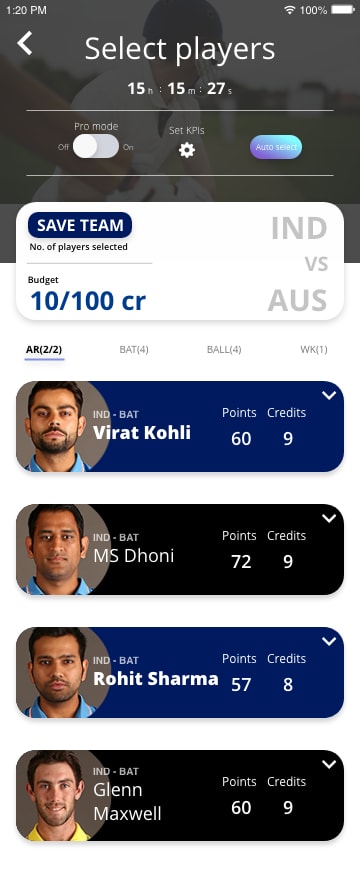
The new users can auto-select the team and view the KPIs of the selected players which helps users understand the performance index important for a particular role